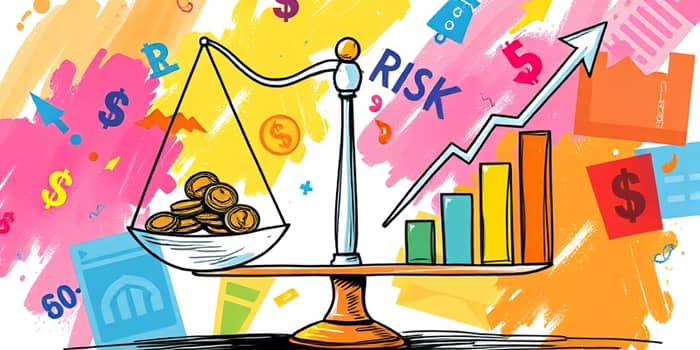
In the complex world of investing, decisions often hinge on how much uncertainty one is willing to embrace in exchange for the chance of greater gains. This article unpacks the components of this fundamental balance, offering practical guidance to help readers shape a portfolio that aligns with their ambitions and comfort zones.
By examining real-world data, exploring measurement tools, and sharing actionable strategies, we aim to empower you with clarity and confidence as you navigate the investment landscape.
The risk-return tradeoff is a foundational investment principle in finance that illustrates a direct link: accepting more risk generally unlocks the possibility of higher potential reward. Conversely, seeking capital preservation often means settling for more modest gains.
Every asset class—from cash to equities—carries its own mix of volatility and expected returns. Recognizing these patterns is the first step toward constructing a portfolio that reflects your unique time horizon and capacity for loss.
To compare different opportunities objectively, investors rely on a set of metrics and analytical techniques. Three of the most common tools include Beta, Alpha, and the Sharpe Ratio. Each sheds light on different dimensions of performance.
Understanding these measures equips you to gauge whether an investment’s return justifies the uncertainty you assume.
Beyond these ratios, tools such as Monte Carlo simulations and Value at Risk (VaR) models provide probabilistic views of potential outcomes. While no model guarantees future performance, they offer a structured way to anticipate possible scenarios.
Your personal circumstances and external conditions both play pivotal roles in determining an appropriate balance between risk and return. Key variables include:
By regularly reviewing these factors and updating your strategy, you maintain alignment between evolving goals and the realities of the market.
A well-constructed portfolio seeks to diversify across multiple asset classes, capturing growth while buffering against extreme losses. This approach maximizes the chance of smoother returns without sacrificing the potential for wealth creation.
Key steps include:
For example, a moderate-growth portfolio might hold 60% equities, 30% bonds, and 10% in real assets. Meanwhile, a conservative allocation could tilt toward 40% equities and 60% fixed income, preserving capital with limited upside.
Your mix will evolve as you approach key milestones—such as retirement or major expenses—shifting toward stability when needed.
Investors often stumble by either underestimating risk or chasing returns without assessing risk. Emotional reactions to market swings can lead to buying high and selling low, eroding long-term performance.
To combat these tendencies, establish a written investment policy statement. It should outline target allocations, acceptable ranges for each asset class, and triggers for portfolio adjustments.
Seeking guidance from a qualified financial professional can further ensure that your strategy remains customized and cohesive as markets shift.
There is no reward without risk, but the art of successful investing lies in matching risk-taking with realistic goals and timelines. By leveraging sound measurement tools, tailoring your allocation to personal factors, and adhering to disciplined processes, you can confidently navigate the dynamic interplay between uncertainty and opportunity.
As you embark on or refine your investment journey, remember that the most powerful edge comes from clarity: a clear understanding of the trade-off between risk and potential return, and a clear plan for maintaining that balance through every market cycle.
References













